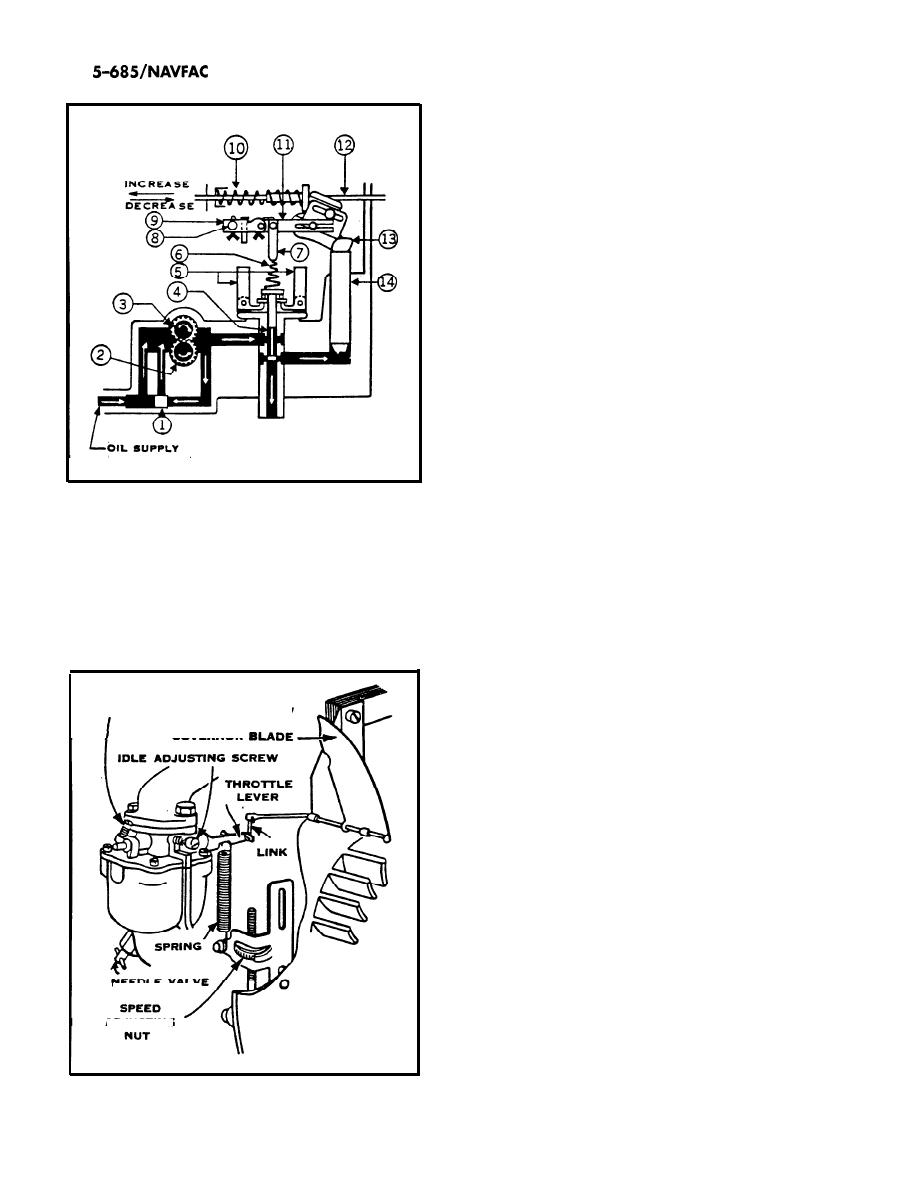

Custom Search
|
|

|
||
 MO-912
TM
flow of high-pressure oil to a servomotor, thereby
operating fuel controls.
(b) The isochronous system uses electronic
sensing and amplifying devices that actuate a type
of servomotor throttle control. The system is used
with power generation where precise frequency con-
trol is required. An isochronous system may be sen-
sitive to frequency changes (engine speed) or to both
frequency and load. When responsive to load
changes, the system corrects fuel settings before
load changes can appreciably modify engine speed
or frequency.
3-9. Air intake system.
Approximately 15 pounds of air is required to burn
one pound of fuel. Accordingly, the air requirement
for a 2000 horsepower engine is about 3600 cubic
feet per minute. The same horsepower-to-air rela-
tionship applies to engines for other power ratings.
Intake air carries dust particles, water vapor and
FROM ENGINE
other foreign material. Since these materials can
damage moving parts within the engine, filtration
of the intake air is necessary. A 2000 horsepower
Figure 3-13. Hydraulic Governor.
1) PLUNGER, 2) GEAR PUMP DRIVE, 3) GEAR PUMP
engine, breathing air containing three parts per
IDLER, 4) PLUNGER PILOT VALVE, 5) FLYWEIGHT,
million dust contamination, would take in 25
6) SPEEDER SPRING, 7) SPRING FORK,
pounds of foreign material in 1000 operating hours.
8) SPEED-ADJUSTING SHAFT, 9) SPEED-ADJUSTING
An air intake system must collect, filter, and dis-
LEVER, 10) SPRING, 11) FLOATING LEVER,
tribute the required air to the engine cylinders. This
12) FUEL ROD, 13) TERMINAL LEVER,
14) SERVO PISTON
must be accomplished with a minimum expenditure
of energy (pressure drop). The objective of air filtra-
tion is the reduction of engine component wear. Sev-
eral types of air filters or air cleaners are used. The
pleated-paper type are strainers, porous enough to
pass air but able to remove solid particles larger
THROTTLE
ADJUSTING
SCREW
than 0.002 of an inch. Larger engines use an oil-
GOVERNOR
bath air cleaner (see fig 3-15). In oil-bath cleaners
air is drawn through an oil bath. Solid particles are
trapped and settle in the unit's bottom pan.
a. Supercharging. Supercharging increases the
amount of air taken into a working cylinder. This
provides the injected fuel oil with more oxygen to
enable combustion of a larger charge of air/fuel mix-
ture. Power output of a certain size engine is
thereby increased, enabling use of smaller engines
where space prohibits larger engines.
(1) Advantages. The power output of a natu-
rally aspirated engine is limited by the normal pres-
sure and oxygen content of the atmosphere. When
supercharging is used, the intake valve (port) closes
NEEDLE VALV
with the cylinder under the initial pressure. Super-
charging is particularly effective at higher alti-
ADJUSTING
tudes. The supercharged engine can develop greater
horsepower than the standard naturally-aspirated
unit. The fuel consumption of a supercharged unit
will not exceed that of comparable horsepower sizes
of naturally-aspirated units.
Figure 3-14. Carburetor and pneumatic governor.
3-20
|
 |
|
 |
||